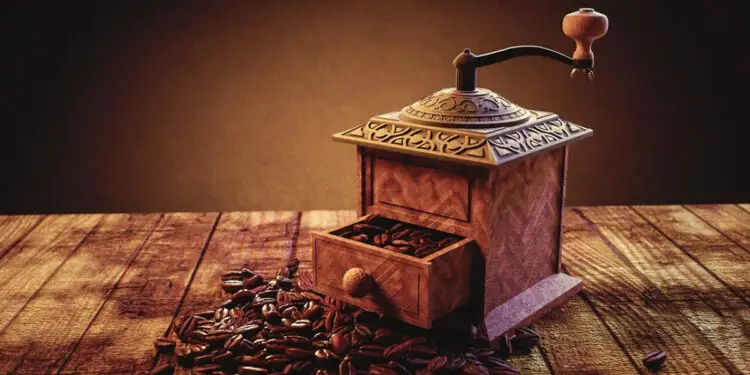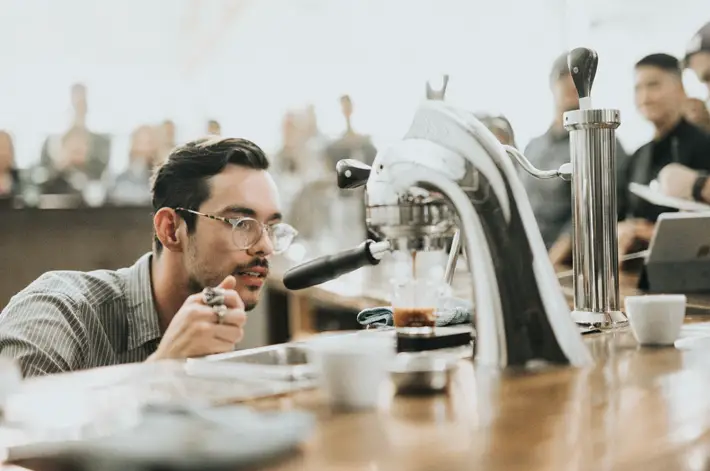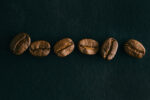Types Of Coffee Beans

Coffee is a beverage that many people cannot imagine starting their day without. Regardless of the type or where it originates from, we all enjoy its taste and aroma on a daily basis.
It’s almost impossible nowadays not to offer a cup of it to a good friend or a visitor who comes to your home. This drink has become a social symbol and a reason to get together. It’s embedded in our memories and life stories.
Coffee plays a big part in socializing, corporate meetings, negotiations, conversations. We drink it at home, when we work and when we relax.
Did you know that there’s a World Coffee Day? It is celebrated on September 29 across the world, while in Japan it’s celebrated on October 1.
Types of coffee
The coffee plant has a large number of species and subspecies, but only two are commonly grown to produce the beverage of the same name: Arabica (Coffea arabica) and Robusta (Coffea canephora). Arabica cultivation dominates coffee plantations around the world, accounting for 75-80% of total production. Click here https://www.tasteofhome.com/article/types-of-coffee/ to find out more.
Arabica is thought to have originated in Ethiopia’s southwestern mountainous regions. It is thought to be the first form of coffee that people began cultivating over 1,000 years ago. This form thrives best at higher altitudes, between 1,300 and 1,500 meters, in climates with temperatures ranging from 15 to 24 degrees Celsius, but it can also withstand harsher conditions.
The Arabica stalk takes about seven years to fully mature. At that time, the tree is cut and shortened several times, allowing it to reach a maximum height of five meters. The arabica tree is much more vulnerable to pesticide use and climate change than the robusta tree.
Arabica plantations, on the other hand, can be found in a variety of natural and altitude conditions. They can be found, for example, at sea level, as well as at 2,800 meters in mountainous areas.
The ripening of the fruit and its harvest can be greatly influenced by climatic conditions. Arabica fruits can be harvested all year on the Indonesian island of Java, while they can only be harvested once a year, in the winter, in Brazil.
Each Arabica fruit berry contains two halves of coffee beans, and the fruit can contain additional coffee beans. One stem of the Arabica plant can produce anywhere from half a kilogram to five kilograms of coffee beans, depending on quality and natural conditions.
Arabica is also cultivated in Latin America, parts of Africa, Southeast Asia, China, and the Caribbean, in addition to its native Ethiopia.
Robusta is grown in the central and western parts of Africa, as well as in the sub-Saharan region. The robusta’s stem can reach a height of up to ten meters. The berries of the beans usually take 10-11 months to mature. Robusta is much more resistant to environmental conditions and pesticide use than Arabica.
This coffee accounts for around a quarter of all coffee production worldwide. Robusta was not officially recognized as a coffee variety until 1897. French colonists brought this plant from Ethiopia and central Africa to French Polynesia, Borneo, Costa Rica, Nicaragua, Jamaica, and the Lesser Antilles.
Robusta is easier to grow than Arabica, but it is considered a lower-quality as compared to Arabica. While Brazil is the world’s largest coffee producer, Robusta is mainly exported from Vietnam, which has become the world’s leading producer of this type of coffee. While Brazil is the world’s largest coffee producer, Arabica accounts for 80% of Brazil’s coffee exports.
To be clear, Arabica and Robusta are two different types of coffee; however, they are not the only ones. Liberica and Excelsa are two more unique varieties about which little is known and studied. The explanation is simple: Arabica and Robusta account for 99 percent of all coffee produced for commercial purposes.
The bean’s strength depends on the roasting
The first and most significant step in making this beverage is roasting the beans. Roasting brings out the full aroma, flavor, and intensity of the beans. The stronger the roasting, the more powerful the drink. Click here to find out more about the coffee roasting process. Due to sucrose, which transforms into caramel under the influence of temperature during the heat treatment, the coffee takes on its normal dark brown colour.
The benefits of drinking coffee
We all drink coffee, but it is perhaps one of the most controversial drinks. Often, there are arguments against it by those who are not fond of the beverage. But, what are the benefits of consuming it?
The first benefit is that it is a healthy product that is high in antioxidants. Coffee has been shown in several studies to be higher in antioxidants than fruits and vegetables. It also contains vitamin B in smaller amounts, so if you consume more cups during the day, the vitamin intake would be adequate. If you want to find out more about types of coffee beans, just do some research online.
Coffee increases our focus, thought speed, and reaction time. It also decreases fatigue while also speeding up the metabolism, allowing you to function more efficiently and consistently. However, since some of these effects are temporary, if you consume it often, that is, on a daily basis, many of these advantages can be lost as the body becomes used to a certain amount of caffeine.
People who drink this beverage have a 25-50 percent lower chance of developing Type 2 diabetes. This was shown in 18 studies involving more than 450,000 people. Each cup of coffee consumed lowers the risk of type 2 diabetes by as much as 7%.










